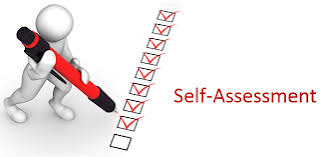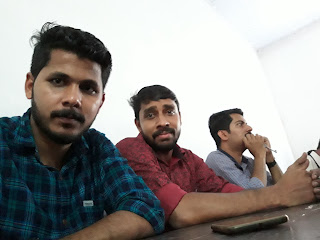TOPIC: Survey to Find the Effectiveness of Advertising Methodologies Adopted By fine Gold and diamond jewelry
INTRODUCTION
The
Objective Of All Business Is To Make Profit And Merchandising Concern Can Do
That By Increasing Its Sales At Remunerative Prices .This Is Possible As The
Product Is Widely Published To Be The Final Costumers . In Such A Case
Advertisement Is Very Useful To Every Firm. The Word Advertisement Has Its
origin From a Latin Word ‘Adventure’. Which Means Turn To The Dictionary
Meaning Of The Word Is To Announce Publicity Or Public Concerned To A Specific Thing
Which Has Been Announced By The Advertiser Publicity In Order To Inform And
Influence The With The Ideas Which Advertisement Carries.
Today
The Word Advertising Is Very Common To All Of Use It Is The Business Of People
By The People And For The People. Advertising Is An Integral Part Of Our Social
And Economic System. As A Technique For Promoting Sales Has Been Doing Wonders
In The Domain Of Distribution Because, It Influence The Course Of Consumption
Effect The Process Of Production Enlarge Exchanges And Diversify Distributions.
Now
We Have Looked Overall Integrated Marketing Communication Planning, Let’s Did
More Deeply In To The Specific Marketing Communication Tools. A Advertising
Involve Communicating the Company’s Or Brand Value Proposition by Using Paid
Media to Inform Persuade, And Remind Customers. Advertisement is a costly affair, but very
seldom serious attempts are made to judge how far it is effective, how many
benefits the costs of advertisement yield, how the benefits, if any, are
related to advertisement and so as. Till recently, the effectiveness of
advertisement has been measured in relation to sales. This is what is known as
quantitative way of measurement.
This
measurement emphasizes whether an advertisement was acceptable to consumers and
whether they digested it and remembered it. This is known as “stimulus response
function”. There is no dispute about the fact that the most objective way of
measuring an advertisement is through sales. Sales in turn are influenced by complexity of forces which fall into qualitative type of advertisements
Therefore,
the measurement of quality is an indicator of the index of the quantitative
type of measurements. The advertisement should first appeal, that is, it should
stimulate the demand for a particular type of the product. Only then can some
results be expected from it. The success of an advertisement can be analyzed
only with the help of some survey data relating to consumer response and sales.
Now
Jewelers Are Competing One Another To Introduce There Product And Service In
Front Of Customers. So Advertising Play A Major Role To Introduce There Product
And Services And It Attract A Large Number Of Customers.
NEED 0F THE STUDY
Investigation into this
subject matter be very necessary to both advertisers’ and consumers. This study
will;
· Inform producers, companies and marketing
organizations& advertising agencies if it strategies are effective.
· Help consumers understand effects 0f
certain deceptive messages in adverts.
· Help advertisers’ t0 identify advertising medium
that gets attention 0f summers.
· Inform Advertisers abut it level of impact 0n
buying power 0f consumer.
OBJECTIVE OF THE STUDY
Study On effectiveness of advertisement
t0 point
0f purchase while sales promotion start functioning by providing a specific
inducement.
· report may help management in taking
decision help m tonged a clear idea of this strength weakness in advertising
field
HYPOTHESES OF THE STUDY
Advertising Play A Major Role To Introduce There
Product And Services And It Attract A Large Number Of Customers.
STATEMENT OF THE PROBLEM
Survey to Find the
Effectiveness of Advertising Methodologies Adopted By fine Gold and diamond
jewelry
SCOPE OF THE STUDY
· Advertisement aims at developing a favorable
consumer attitude towards product& moving consumer
to point of purchase while sales promotion start functioning by providing
a specific inducement.
· report may help management in taking
decision help me to get a clear idea of this strength weakness in advertising
field
LIMITATION OF THE STUDY
· Most of the respondent are reluctant to give
information
· An in depth study was not possible due to time
constrains.
· study was purely confined to 50 sample may not
be applicable to entire customers
METHODOLOGY
Survey
methodology is used. survey methodology studies
the sampling of individual units from a population and associated techniques of survey data collection, such as questionnaire construction and methods for improving the number and accuracy of responses to
surveys
CONCLUSION
From this
project I can understood that advertising activities adopted by fine
gold are effective.as audience we saw a lot of advertisement every day in
television , magazines, newspapers etc.
Fine
gold pays a less expense on advertisement and thereby they provide quality product to the
public at a reasonable price.in this reason a wide range of customers are
attract to the fine gold.
Fine
gold is one of the finest dealers of gold in Kerala. They have a good sale
every year and they provide a good piece of service to them. This study has
impartial result on its findings so that it can be conclude that brand
awareness has great range of influence on buying decision on advertisement.
FINDINGS
· The most people are likely to wear ornaments
(Gold, platinum, diamond)
· The most of the people are known fine gold
· Most of the public have noticed the
advertisement of fine gold
· TV is most effective media of advertisement
· Customers got awareness about the brand via
advertisement family, friends etc…
· Majority of the sample are like the
advertisement because of its theme
· Aggregate of respondent opinion that they get
all required information from the advertisement
· Out of 50 sample most familiar advertisement
media is TV
· Most of the respondent opinion that
advertisement is necessary in jewelers
· Majority of the sample are highly satisfied with
the current locality of fine gold
· Major number of respondent have aware of the
product offered by the fine gold
· Most of them are very happy with product so,
they replied that they definitely recommend the product.
SUGGESTIONS
· A
little more consideration should be given to the media like magazines and
newspapers
· The
allocation of revenue on advertisement should be increased by 10% or more
· The
interval in which advertisement given in
magazines and newspapers may be increased
Fine
gold units should be started at different party of Kerala
















